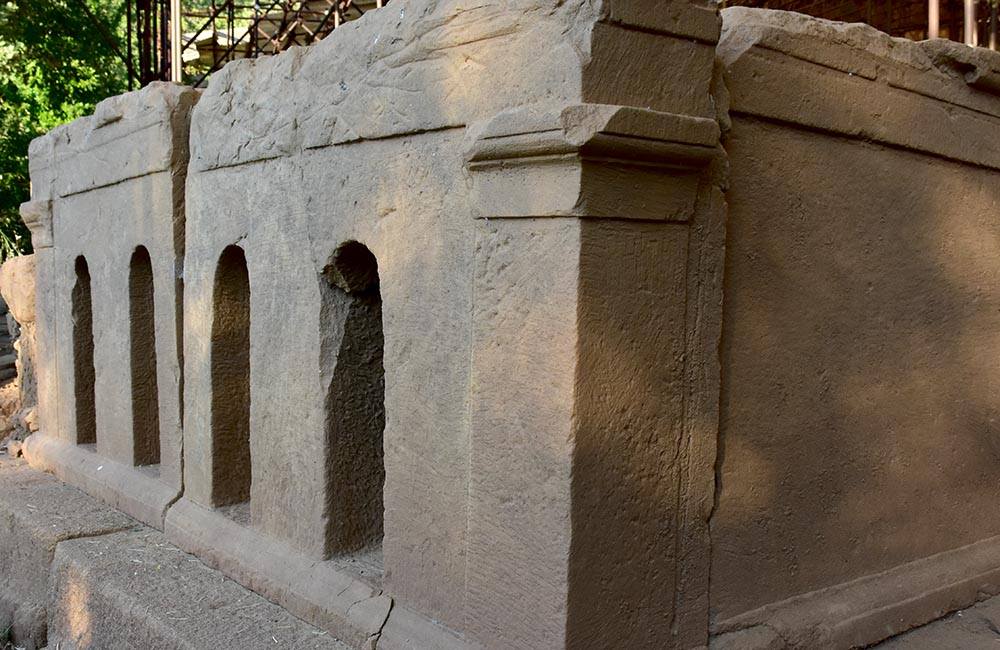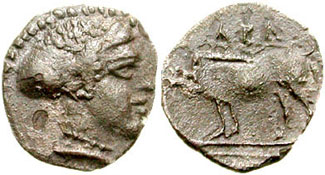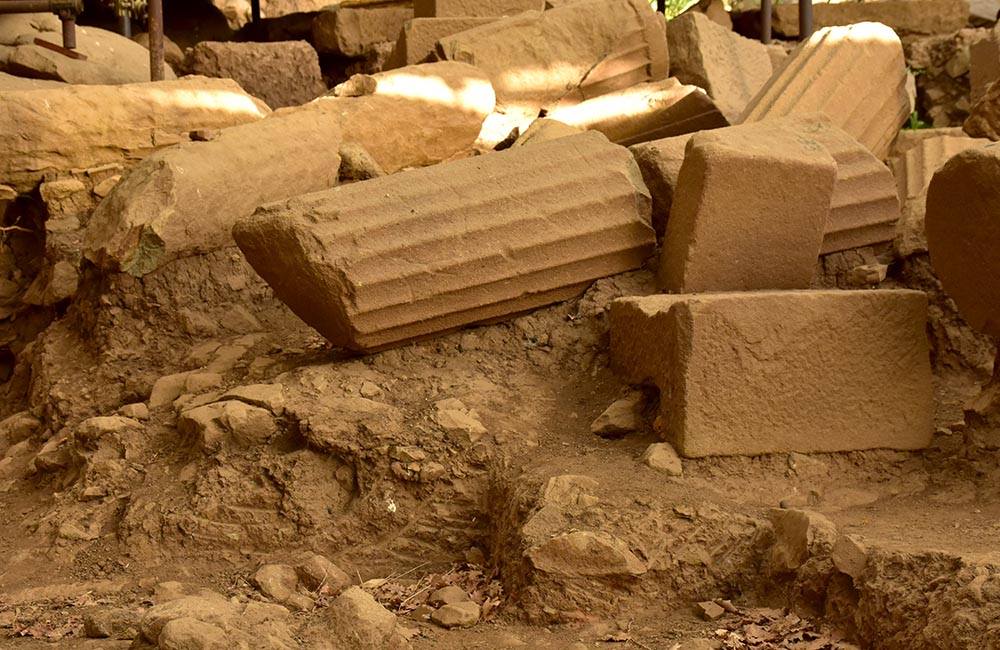Necropoli di ABACENA (Abakainon) - TRIPI



Nella valle tra Tripi e Novara di Sicilia, nei Monti Nebrodi in C.da Cardusa, vi sono i resti archeologici di una Necropoli, ove sorgeva l’antica città di Abakainon (Abacena) le cui origini risalgono al paleolitico superiore o al neolitico medio, la cui presenza è documentata sia nell’età del bronzo che in quella del ferro, sino all’arrivo degli invasori greci.
I suoi abitanti (abacenini), di origine Sicula, fondavano la propria economia sull’agricoltura, sulla pastorizia e sull’artigianato, per cui essi intrattennero, in un primo momento, rapporti commerciali con i conquistatori, scambiando i prodotti di loro produzione con manufatti ed utensili. Ma col passar del tempo i colonizzatori cominciarono a vessarli con dazi ed imposizioni, per cui gli abacenini, per sottrarvisi, strinsero alleanza con altre città sicule. Nel 459 a.C. la coalizione attraversò un momento di splendore sotto la guida di Ducezio, ma questi venne poi sconfitto nel 452 a.C. nella battaglia di San Cataldo contro Siracusa ed Akragas, in seguito alla quale fu esiliato a Corinto. Tornato in Sicilia, fu però annientato a Noe (Novara di Sicilia).
Abakainon si ritrovò così senza guida, ma dovendo scontrarsi contro la politica espansionistica di Siracusa, si alleò con Cartagine. La città subì però un altro duro colpo quando i cartaginesi furono vinti e sottomessi dal tiranno di Siracusa, Dionigi, fondatore della città di Tindari. L’esito di questa nuova sconfitta fu per Abacena la perdita di vasti territori. Dionigi affrontò nel 393 a.C. nuovamente i cartaginesi, capeggiati dal Pretore Magone nella battaglia di Campogrande, dove venne sconfitto. I rapporti tra gli abitanti di Abacena e i cartaginesi s’interruppero definitivamente con l’avvento in Sicilia di Agatocle, nel 316 a.C., il nuovo tiranno di Siracusa, che riunì le città siciliane (tranne Agrigento che mantenne l’indipendenza) in un unico regno, da lui capeggiato. Nel 304 a.C.. Abacena, in seguito alla sconfitta da parte dei romani durante la prima guerra punica, fu a questi sottomessa. Pertanto decise di allearsi con i mamertini, ma con l’avvento di Gerone II, tiranno di Siracusa, che sconfisse i mamertini, Abacena trascorre un lungo periodo sotto il dominio romano. Viene eletta municipium nel 262 a.C., cambia il nome in Abacaenum o Abacaena e riacquista splendore. Nel V sec. battè una propria moneta (litrai e hemilitrai). Ma le sorti, purtroppo, si rovesciarono a causa della forte pressione fiscale e, successivamente, della sua distruzione forse da parte di Cesare Ottaviano o forse di un cataclisma, che costrinse i superstiti a spostarsi nella zona dell’attuale Tripi e Casale.
La storia che avvolge Abacena è in realtà molto misteriosa. Intorno al 1550 furono rinvenuti nell’area del castello (c.da Casale), i resti di un’antica civiltà con importanti reperti come monete d’argento e di bronzo con la dicitura Abakain, anfore e frammenti di ceramica. Ma anche reperti riferibili al neolitico e, in uno strato superiore, all’età del ferro. Negli anni ‘90 furono iniziati degli scavi in c.da Cardusa che portarono alla luce una necropoli di notevole importanza ai fini della rilevazione del tessuto urbano. Reperti straordinari: circa 150 sepolture, fornite del corredo funerario, la maggior parte dotate di veri e propri monumenti in pietra arenaria (epytimbia) dalla struttura tipicamente ascrivibile a determinate e varie tipologie con iscrizioni, lavori di oreficeria di notevole pregio, monete databili intorno al 460 a.C con raffigurazioni del cinghiale o della scrofa, unitamente a porcellini e ghiande (come è possibile rinvenire nei ritrovamenti relativi alla Magna Grecia), tipici della zona, altre monete sono del periodo di Gerone e, altre ancora, mamertine, (tutte le suppellettili sono custodite presso l’Antiquarium di Tripi).
I materiali della necropoli sono esposti nel Museo Archeologico “Santi Furnari” di Tripi.
(English)
Necropolis of Abacena (Abakainon) - TRIPI
In the valley between Tripi and Novara di Sicilia in the Nebrodi Mounts, in contrada Cardusa, there are the archaeological ruins of a Necropolis, where the ancient town of Abakainon (Abacena), whose origins date back to the Upper Palaeolithic or to the Middle Neolitic, whose presence is proved both in the Bronze Age and in the Iron one till the arrival of the Greek invaders rose.
Its residents (Abacenini) of Sicilian origins, founded their economy on the agriculture, on the sheep-breeding and the crafts; so initially they entertained business relations with the conquerors, exchanging the products of their production for manufactured products and tools. But with time the colonized began to oppress them with duties and taxes, therefore, the Abacenini, to avoid them, made alliances with other Siculian towns.
In 459 B.C. the coalition pass through a moment of splendor under Ducezio's leadership, but he was later defeated in 452 B.C. at the Battle of San Cataldo against Syracuse and Akragas, following which he was exiled to Corinth. Returning to Sicily, however, he was annihilated at Noe (Novara di Sicilia).
Abakainon thus found itself without leadership, but having to contend against Syracuse's expansionist policy, it allied itself with Carthage. The city suffered another blow, however, when the Carthaginians were defeated and subdued by the tyrant of Syracuse, Dionysius, founder of the city of Tindari.
The outcome of this new defeat was, for Abacena, the loss of extended territories.
In 393 B.C., Dionigi confronted again the Carthaginians, leaded by the Praetor Magone in the battle of Campogrande, where he was defeated.
The relationship among the residents of Abacena and the Carthaginians broke off definitively with the advent, in Sicily, in 316 B.C., of Agatocle, the new tyrant of Syracuse, who reunited the Sicilian cities (except Agrigento, which maintained its independence) in one kingdom, leaded by him.
In 304 BC. Abacena, following defeat by the Romans during the First Punic War, was subjugated to them. It therefore decided to ally itself with the Mamertines, but with the advent of Hieron II, tyrant of Syracuse, who defeated the Mamertines, Abacena spent a long period under Roman rule. It was elected municipium, in 262 BC, changed its name to Abacaenum or Abacaena and regained its splendor. In the fifth century it minted its own currency (litrai and hemilitrai). But fates, unfortunately, reversed due to heavy taxation and later its destruction, perhaps by Caesar Octavian or perhaps by a cataclysm, which forced the survivors to move to the area of present-day Tripi and Casale.
The history that envelop Abacena is really very mysterious. About at 1550, in the area of the castle (contrada Casale), were discovered the vestiges of an ancient civilization, with important finds as silver and bronze coins with the wording “Abakain”, amphores and fragments of pottery. But also referable finds to the Neolithic, and in an upper layer, to the Iron Age. In the nineties, in contrada Cardusa some excavations were begun, that brought to light a necropolis of considerable importance for the survey of the urban fabric.
Extraordinary finds: about 150 burials, provided with the funerary equipment, most of them equipped with real sandstone monuments (epytimbia) with the structure typically ascribable to certain and various types with inscriptions, gold work of considerable value, coins dated around 460 BC. C with depictions of the wild boar or the sow, together with little pigs and acorns (as can be found in findings related to Magna Graecia), typical of the area, other coins are from the period of Gerone and, other still, mamertine, (all the furnishings are kept at the Antiquarium of Tripi).
The materials of the necropolis are exhibited in the Archaeological Museum "Santi Furnari" in Tripi.